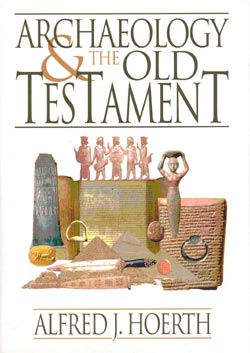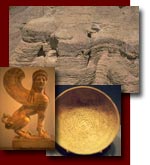| Site Map | Contacts | Links | Newsletter | |
Biblical Archaeology
Introduction
I remember taking a special education class that was offered at the University of Pennsylvania in Archaeology and the Bible. It was very interesting. It inspired me to write my dissertation on "The Date of the Exodus in Ancient Writings."
According to secular archaeologists only from the time of Solomon on is regarded as reliable information in the Bible. These archaeologists are called Maximalists. Other archaeologists push this back to after the Jewish exile in Babylon. They are known as Minimalists.
For the Maximalists the key archaeological finds are the Solomonic gates at Megiddo and at other sites. True Israelite settlements are distinguished in the Iron age. Before Solomon Israel's history is hotly contested. There are three main issues of early Israelite history that are debated:
- Was There really a patriarchal age?
- Was there a conquest of Canaan or a gradual settlement?
- Was there an amphictyonic confederacy of tribes during the time of the Judges?
For most the patriarchal age is mythical. It is important to understand what is meant by myth. Myths are stories based on some truth.
There are three theories on the emergence of Israel in Canaan:
- Conquest.
- Gradual movement of tribes is purposed by Alt, and then advanced by North. Most take this view.
- A peasant revolt purposed by G. E. Mendenhall.
Questions on Chronology
Genealogies of Genesis are very similar to the Sumerian King List. There is debate over the date of the Exodus. There is the early date of the exodus which early writers espoused or the late date of the exodus in the time of Rameses II or later. Most archaeologists take a late date for the exodus. The key archaeological evidence is the Merneptah Stele. Merneptah boasts that he has destroyed Israel (1210 BC). Therefore Israel is all ready in the land of Canaan before 1210 BC.
History
Petrie, the father of modern archaeology, was somewhat eccentric. Petrie believed that the Great Pyramid was the key, so he wanted to check its measurements. No one was allowed to measure, so Petrie dressed up as a ballerina. By acting crazy he was able to measure the pyramid and find out that it was not true. He went on to dig in a number of ancient cities. Sir William Matthew Flinders Petrie (1853 - 1942) Sir William Petrie Sir William Matthew Flinders Petrie was born in Charlton, England in 1853. The son of a surveyor and engineer who believed the theory of Piazzi Smyth.
William Foxwell Albright was the greatest leader in archaeology this the past century.
Kathern Kenyon was famous for her dig at Jericho challenging the Biblical story of Joshua.
There was a major shift from Biblical archaeology to just archaeology. Bible scholars were trying to dig to prove the Bible true, but they did not find the answers they wanted.
Dever: Well known leader in Archaeology
Frankelstein: His survey work has led to the revising of the settlement of Canaan.
Text Books
 This is a good textbook. Hoerth, Alfred. 1998. Archaeology & the Old Testament. Grand Rapids: Baker. |
Old Testament
Hoerth, Alfred. 1998. Archaeology & the Old Testament. Grand Rapids: Baker.
New Testament
McRay, John. 1991. Archaeology & the New Testament. Grand Rapids: Baker.
Historiography
Millard, Hoffmeier, & Baker. 1994. Faith Tradition & History. Winona Lake: Eisenbrauns.
Miller, J. Maxwell. 1976. The Old Testament and the Historian. Philadelphia: Fortress Press.
Periodicals
"The Biblical Minimalists: Expunging Ancient Israel's Past." Bible Review XIII:3, June 1997, 32.
Links
From BAR July/August 1998: "David's Jerusalem: Fiction or Reality?"
From BAR July/August 1997: "Face to Face: Biblical Minimalists Meet Their Challengers"
From BAR March/April 2000: "The Search for History"
From BAR March/April 2000: "Will Tel Rehov Save the United Monarchy?" by Amihai Mazar and John Camp
From BAR July/August 1997: "Cow Town or Royal Capital? Evidence for Iron Age Jerusalem"
From BAR May/June 2000: "What's an Egyptian Temple Doing in Jerusalem?" by Gabriel Barkay
From BAR November/December 1999: "Everything You Ever Knew About Jerusalem Is Wrong (Well, Almost)" by Hershel Shanks
From BR December 1995: “Erasing History: The Minimalist Assault on Ancient Israel,” by Baruch Halpern
From BR June 1997: “The Biblical Minimalists: Expunging Israel’s Past,” by Hershel Shanks
From BAR March/April 2000:
“The
Search for History in the Bible”: “What
Separates a Minimalist From a Maximalist? Not Much ”by Philip Davies;
“Save
Us from Postmodern Malarkey” by William Dever;
“Will
Tel Rehov Save the United Monarchy?” by Amihai Mazar and John Camp
